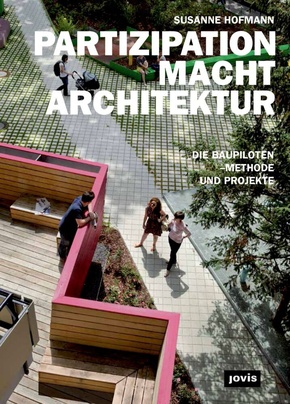PARTIZIPATION MACHT ARCHITEKTUR - Die Baupiloten-Methode und Projekte
| Verlag | Jovis |
| Auflage | 2014 |
| Seiten | 256 |
| Format | 17,3 x 24,1 x 2,1 cm |
| Klappenbroschur | |
| Gewicht | 730 g |
| ISBN-10 | 3868593020 |
| ISBN-13 | 9783868593020 |
| Bestell-Nr | 86859302A |
Unsere Gesellschaft beansprucht zunehmend Teilhabe an der Gestaltung unserer gebauten Umwelt. Ohne Partizipation der Bürger ist kaum noch ein größeres Bauprojekt durchsetzbar. Und in der Tat ist das Wissen der Nutzer über den Gebrauch und das Erleben von Räumen für Architekten ein wertvolles Werkzeug im Entwurfsprozess.
Wie erfolgreiche Partizipation aussehen kann, zeigt dieser Band anhand einer im Praxistest entwickelten Methode, bei der die Kommunikation über und durch Atmosphären im Mittelpunkt steht. Realisierte Projekte der Baupiloten werden ergänzt von einer großen Bandbreite an Beteiligungsmöglichkeiten - aufbereitet als praktische Hinweise und offen für die eigene Anwendung. Damit lädt das Buch zum sofortigen Ausprobieren ein.
Partizipation macht Architektur richtet sich nicht nur an Architekten und Architekturvermittler, sondern auch an Kommunen, Verwaltungen und insbesondere an die Nutzer von Stadt und Architektur.
In our society there is an increasing demand for participation in shaping our built environment. Without civic participation, few major building projects can go ahead. Furthermore, the knowledge of the users with regard to utilization and how spaces are experienced is in fact an important tool for architects during the design process.
This volume presents examples of successful participation, according to a method developed in the practice text, in which the focus is on communication about and by means of atmospheres. Realized Baupiloten projects are supplemented by a wide range of participatory options-presented as practical guidelines that can be used for one's own individual purposes. Therefore the book invites direct application.
Partizipation macht Architektur is not only targeted towards architects and architectural agents, but also towards communities, administrations, and especially the users of the city and architecture.

